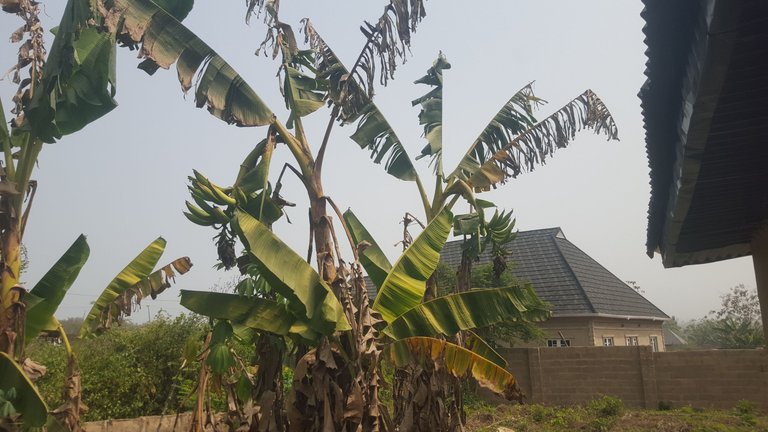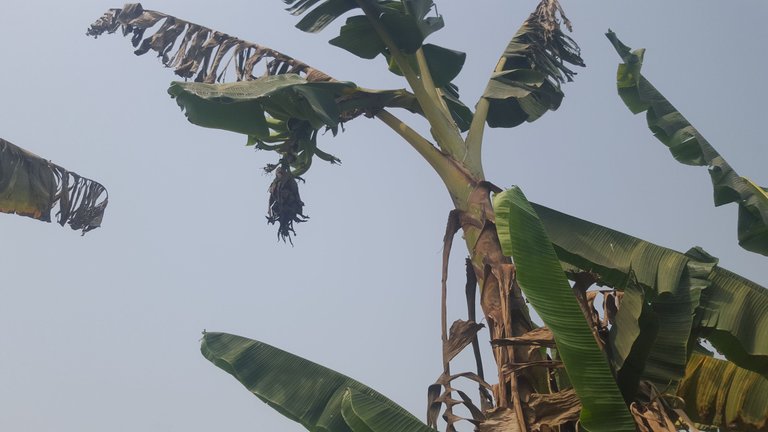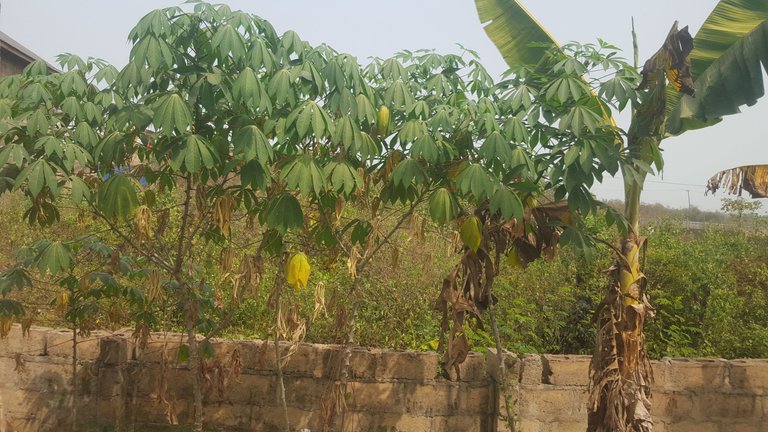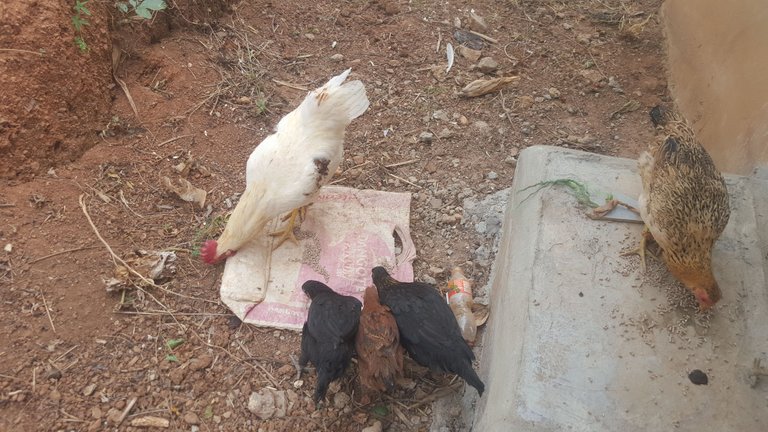Gardening and the dry season
Nigeria is located within the tropical region - the region between the tropic of Capricorn and the tropic of Cancer North and South of the equator respectively. One of the implications is that we usually experience distinct dry and wet seasons. On average, the dry season lasts between 3 to 4 months while the rainy season fills up the remaining months of the year. There are microvariations with some places within the country experiencing shorter dry seasons (coastal areas) while some experience longer dry seasons (extreme North).
Luckily for me, I stay in a region that seems to be in between the two extremes. In the Southwestern part of Nigeria, the dry season usually starts towards the end of November and ends somewhere around March. Thus, we are currently in the middle of the dry season which is usually characterized by minimal farming activities, except for those that opt to cultivate swamplands. During rainy seasons, swamplands are usually flooded and unideal for farming as the soils are poorly aerated.
During the dry season, however, swamplands become vital for the cultivation of some essential farm produce such as leafy vegetables. These farm products need to be available year-round to continuously nourish the population and keep food inflation in check. First, the swamps are cleared and drained by digging drainages across the land. Crops such as maize, tomatoes, leafy vegetables, and other crops with short life cycles are usually planted. This is to ensure that harvesting is done before the rainy season resumes and the entire farmland becomes flooded.

For those of us that are garden enthusiasts, we have no option but to patiently wait for the rainy season to resume our gardening activities. Since I planted some crops that need more than a single rainy season in order to fruit, I fear some of them may not make it through to the next rainy season. Worse still, some of the plantain plants in my garden decided to flower when the rainy season was already packing its bags. The implication is that there will not be enough water for the fruits to properly form and develop.
Apart from the fact that it is already looking like the fruits of some of the plantains will not form properly, a few individual plants that are already fruiting have seen their stems collapse. This is largely due to inadequate water. When the cytoplasm of plant cells does not have enough water, the cell wall shrinks and this is exactly what led to the collapse of the stems of those individual plants. I envisage that more might still collapse before the rainy season starts around March.

The cassava stems I planted have lost some leaves due to water shortage. It is a coping mechanism to reduce the rate at which water is lost from the parent plant by the process of evapotranspiration. Also, the little resources that the plant is able to make in this period will be rationed accordingly. On the bright side, it looks like they will make it through to the rainy season they are an underground storage plant.

I harvested the potato plants just before the dry season kicked in and it was a bountiful one. Interestingly, I started noticing offshoots of potato leaves at different points across the garden a few weeks after harvesting. There is only one possible answer, some tubers are still left underground. I must have missed them while harvesting due to inexperience. I decided to dig up some and the result was amazing. I now have another potato bounty that could last us a couple of weeks.

In addition to gardening, I also have a plan of going to animal rearing in the nearest future, largely inspired by the new environment we found ourselves in. Luckily for me, I was offered a couple of local hens by families and friends. The hens are up to five in number and are of different maturity - one cock and four chickens.

Even though they are local hens that will eat virtually anything that is given to them, I have been feeding them with grower feeds purchased from a retail outlet. The plan is to construct a proper chicken pen to house them in the nearest future. For now, I am making do with a locally crafted pen made using palm fronds.

Why am I rearing local hens over hybrids?
- Local hens are stronger. They hardly fall sick and have a high survival rate.
- They do not need any special feed. In actual fact, they do just fine scavenging from soils and the environment in general. In other words, they have low maintenance.
- Even though they do not produce as much meat as hybrids, their meats are usually more palatable.
- Their eggs are also more palatable than eggs of hybrid hens. They also do not need special feeds in order to start laying eggs.
The long-term plan is to rear both local and hybrid hens, as well as other animals such as goats and sheep. For now, I am still trying to get acclimatized to our new environment.
What do you think?
nice harvesting

!1UP
You have received a 1UP from @gwajnberg!
@stem-curator, @neoxag-curator, @pal-curator
And they will bring !PIZZA 🍕.
Learn more about our delegation service to earn daily rewards. Join the Cartel on Discord.
I gifted $PIZZA slices here:
@curation-cartel(4/20) tipped @gentleshaid (x1)
Join us in Discord!
Your write up is good, for farmers their glory days are during raining season mine is cold season i hate heat seriously. To me there are more advantages during cold season than heat like- few mosquitoes, cool breeze, sleeping comfortably at night wit your blanket and fast drying of clothes some persons their skin glow during cold season. And for the chickens I love local chickens is strong and taste better. Thanks for sharing ☺️
Thank you for the warm comment. Cold weathers are cool, just that one tend to sleep a lot. Some of us cannot afford to sleep as much as we would have loved.
😂
😂 funny you the sleep thing got me... yeah you re right.
First of all, I find your article really educative. Secondly, you write so well. You have decent plans and I hope you realize every goal you have set for yourself. Good luck and thank you for posting in the Hive Naija Community.
Thanks for your contribution to the STEMsocial community. Feel free to join us on discord to get to know the rest of us!
Please consider delegating to the @stemsocial account (85% of the curation rewards are returned).
You may also include @stemsocial as a beneficiary of the rewards of this post to get a stronger support.